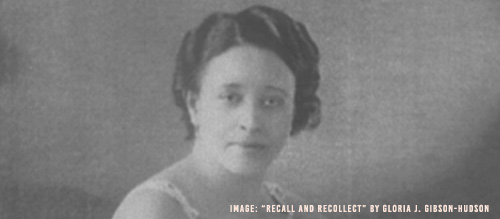10 Unsung Women Filmmakers of the Silent Era
Since the silent era, women have played important roles in the development of film. It’s generally a well-kept secret that women were writing, editing, directing, and producing movies as early as the late 19th century. In fact, some were major players in developing filmmaking techniques that are standard today. If the names of these women aren’t familiar to the average film lover, it’s only because, thanks to sexism and racism, their contributions fell into obscurity. The work of some are still being questioned by film scholars, with the majority of their contributions attributed to their male partners. Regardless, these women need to be emblazoned in film canon and given their proper dues. This Movie List from The Film Magazine hopes to repair the damage and rescue them from underserved obscurity. These are 10 Unsung Women Filmmakers of the Silent Era.
Follow @thefilmagazine on Twitter.
10. Eloyce Patrick King Gist

Eloyce Patrick King Gist has the distinction of being the first black woman filmmaker. Like her contemporary Oscar Michaux, Gist produced films for the largely underserved Black community. However, she made movies for spiritual uplift rather than for entertainment.
Born in 1892 in Hitchcock, Texas, Gist met and married her husband James Gist, an evangelical Christian who produced silent films for local churches. Though a Baha’i by faith, she joined her husband’s endeavors by rewriting and re-editing his films Hell Bound Train (1929-1930) and Verdict Not Guilty (1930-1933). However, Gist may have also reshot some scenes in a second version of Hell Bound.
Unlike many of the race films that were shot during this period, their movies were unpolished (many scenes were shot out of focus), relied on nonprofessional actors, and used unconventional narrative structures. Regardless, Eloyce Patrick King Gist was one of the first black independent filmmakers during the silent era.
Recommended for you: The Subversion of the Motion Picture Code in Cat People
9. Margery Wilson

Sara Barker Strayer, who changed her name to Margery Wilson so she wouldn’t ruin her family’s reputation, began acting in Cincinnati along with her sister, appearing in one-woman shows and touring in acting companies around the country. After auditioning for her sister with D.W. Griffith, she got a part in his 1916 movie Intolerance. She acted in three dozen roles while under contract with Griffith.
After joining the New York Motion Picture Corp., she wrote, directed, and produced films between 1920 and 1923, including The Offenders (1922-1923), That Something (1920), Two of a Kind (1922), and Insinuation (1922). Her movies, however, are lost. Only photo stills exist.
Questions about whether she actually directed these films continue to keep film scholars up at night. Though Wilson credits herself in her autobiography for producing and directing The Offenders, The American Film Institute credits Fenwicke L. Holmes as director. However, both modern and contemporaneous accounts agree that she performed most of the behind the camera production for Insinuation. Regardless, Wilson is still indisputably a woman pioneer in early silent filmmaking.

